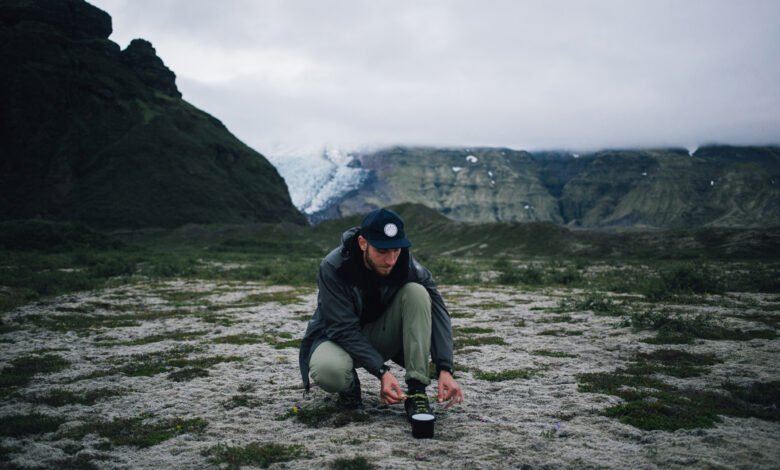Kotora Melnkalne: Whispers from the Forgotten Mountain

Nestled in the mist-shrouded heart of a land where folklore breathes and history sleeps, lies Kotora Melnkalne—a name not found on most maps, but one that echoes in the stories told by firelight. It is not a single peak but a vast, brooding range, a realm of dark pine forests, silent lakes, and crumbling stone ruins that speak of a time long past. To journey to Kotora Melnkalne is to step into a living tapestry woven with threads of myth, melancholy, and an undeniable, rugged beauty. This is not a destination for the faint of heart; it is a pilgrimage for the soul seeking to listen to the whispers of the ancient world.
The Discovery: A Name Resurrected from Obscurity
The very act of “discovering” Kotora Melnkalne is a journey into historical detective work. The name itself is a key to its past; “Melnkalne” directly translates from Latvian to “Black Mountain,” a common toponym for dark, forest-covered highlands across Eastern Europe. “Kotora” is more enigmatic, potentially derived from an old word for a fortified place or a sharp, rocky outcrop. The region was largely forgotten by the wider world, its stories preserved only in isolated village oral traditions and the cryptic notes of a few early 20th-century ethnographers. Its modern rediscovery came not through grand expeditions, but through the piecing together of these fragments—a folk song here, a local legend there—until the silhouette of the mountain and its profound cultural significance began to emerge from the fog of time, inviting a new generation of explorers and dreamers to its slopes.
A Landscape Forged in Myth: The Geology of Legend
The physical grandeur of Kotora Melnkalne is the foundation of its mythos. The range is a dramatic tapestry of jagged basalt cliffs, deep glacial valleys, and peat bogs that seem to swallow sound whole. The unique mineral composition of the rock, rich in dark iron deposits, causes the mountains to appear a deep, almost blackish-green from a distance, especially under the stormy skies that frequently gather around the summits. This imposing appearance naturally bred legend. Local folklore claims the mountains were not formed by tectonic shift, but by the body of a colossal primordial giant, felled in a battle with the gods, his stone bones becoming the ridges and his blood the iron-rich streams. Every unusual rock formation has a story: the “Devil’s Anvil,” the “Weeping Maiden,” and the “Silent King’s Throne” are not just tourist stops but chapters in a vast, open-air storybook written by centuries of human imagination interacting with an awe-inspiring natural world.
The Keepers of the Old Ways: Culture and Isolation
The communities that cling to the valleys of Kotora Melnkalne are as much a part of the landscape as the ancient trees and stoic rocks. Centuries of geographical isolation have cultivated a unique cultural identity, distinct from the surrounding lowlands. Here, traditions are not performed for show but are lived. Intricate folk designs, reminiscent of protective sigils, are carved into door frames and woven into traditional woolens. The local dialect is thick with words and phrases forgotten elsewhere, many relating to the weather, wildlife, and the subtle moods of the forest. Their festivals are tied to the solstices and the harvest, celebrations that feel less like recreation and more like a necessary, respectful dialogue with the forces of nature upon which their survival has always depended. To visit these communities is to witness a resilient culture that has learned to thrive in the shadow of the magnificent, dark mountain.
The Eternal Allure: Why We Seek the Unknown
What drives us to places like Kotora Melnkalne? In a world that is meticulously charted, digitized, and explained, such places offer a precious commodity: mystery. They represent the last vestiges of the unknown, the blank spaces on the map that force us to rely on intuition, local wisdom, and our own resilience. The allure is the promise of disconnection from the constant hum of modernity and a reconnection to something more primal and profound. It is the thrill of walking a path few have walked, of hearing a story no one has written down, and of feeling the humbling, awe-inspiring presence of nature that is utterly indifferent to human affairs. Kotora Melnkalne does not care for our deadlines or anxieties; it simply exists, powerful and eternal, and in its presence, we are reminded of our small but wondrous place in a much larger story.
FAQ About Kotora Melnkalne
Q: Where exactly is Kotora Melnkalne located?
A: To preserve its fragile ecosystem and unique culture, its exact location is often kept vague by those who know it, generally placed within the broader Baltic region. It is accessible only by a combination of local transport and dedicated hiking.
Q: Is it a safe place for tourists to visit?
A: It is a destination for experienced hikers and respectful travelers, not casual tourists. The terrain is challenging, weather changes rapidly, and services are minimal. Visitors must be self-sufficient, prepared, and deeply respectful of local customs and the environment.
Q: What is the best time of year to visit?
A: Late summer and early autumn are ideal. The weather is most stable, the trails are dry, and the turning foliage against the dark mountains is a spectacular sight. Winters are harsh and inaccessible, while springs are wet and muddy.
Q: Are there guided tours available?
A: Yes, but they are not large commercial operations. They are typically led by local guides from nearby villages who offer deep cultural and natural insight. Booking is essential and often requires direct, personal contact.
Conclusion
Kotora Melnkalne is more than a mountain range; it is an idea. It represents the enduring power of story, the resilience of culture, and the raw, untamable beauty of the wild. It reminds us that there are still places where history is felt in the wind and seen in the stones, where the line between legend and reality beautifully blurs. To know of Kotora Melnkalne is to nurture a longing for a deeper, more meaningful connection to the world—a call to look beyond the horizon and wonder what other secrets the old mountains keep.



